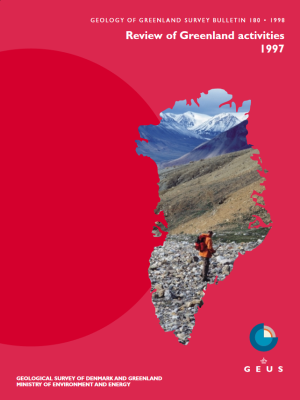Pingos at Nioghalvfjerdsfjorden, eastern North Greenland
DOI:
https://doi.org/10.34194/ggub.v180.5101Abstract
Pingos are isolated, conical mounds up to 50 m high with a core of ice covered by silt, sand or gravel. They are formed in regions where the ground is permanently frozen. Two types of pingo are distinguished, a closed-system and an open-system (Washburn 1979; Pissart 1988). The closed-system type is found on flat plains, whereas open-system pingos are found on valley floors. Open-system pingos grow by artesian pressure (Müller 1959; Washburn 1979). Water from higher altitudes migrates within or below the permanently frozen ground and becomes trapped within the permafrost and freezes to form a lens or core of ice. Active pingos have been reported from Svalbard, Russia, Alaska, Canada and Greenland (Washburn 1979), and fossil pingos from Pleistocene periglacial terrains have been reported from Europe and North America (De Gans 1988). In Greenland, most pingos have been reported from both East and West Greenland. In East Greenland pingos have been described from the area between 71°30′ and 74°30′N (Fig. 1). In West Greenland most pingos occur between 70° and 72°N. In addition, a pingo and some pingo-like forms have been described from North Greenland (Bennike 1983). All pingos in Greenland are located in valleys, usually on outwash plains. During field work in 1997 one fairly impressive pingo and several small pingos or pingo-like forms were observed at c. 79°30′N in eastern North Greenland. These are the northernmost pingos recorded from eastern Greenland, and the aim of this note is to document and describe these forms. The observations add to our knowledge about the distribution of pingos in Greenland, and a map showing the distribution of pingos in Greenland is presented as Fig. 1.
Downloads
Published
Issue
Section
License
This article is distributed under a CC-BY 4.0 licence, permitting free redistribution and reproduction for any purpose, even commercial, provided proper citation of the original work. Author(s) retain copyright over the article contents.


